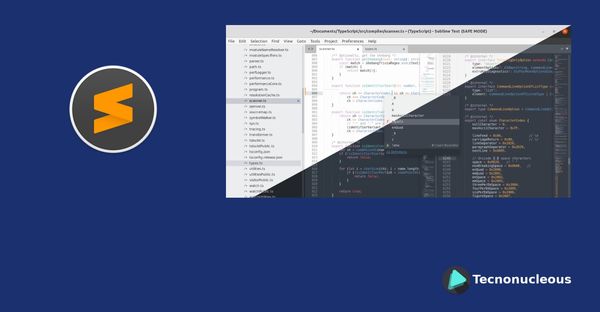¿Cómo hacer copias de seguridad de nuestro VPS con Rsnapshot?

¿Qué es Rsnapshot?

Rsnapshot es una herramienta para hacer snapshots o copias de seguridad de los ficheros del sistema utilizando rsync, es muy fácil de configurar y con tiene un considerable ahorro de espacio cuando los archivos no cambian (utiliza hard links en estos casos). Lo que hace es ir tomando instantáneas del sistema y en caso de que rompas algún programa previamente instalado te permite volver al punto anterior.
Para instalar Rsnapshotseguimos estos pasos, desde la terminal por ssh, nos conectamos como usuario root y escribimos:
apt-get update
apt-get install rsnapshot -y
Ahora que ya tienes Rsnapshot instalado solo queda configurarlo, si no teneis instalado en comando nano en debian solo tenéis que hacer lo siguiente:
sudo apt-get install nano
Una vez tengáis nano ya podemos pasar al siguiente paso:
nano /etc/rsnapshot.conf
Cuando ponemos el comando nano abrimos el archivo rsnapshot.conf para editarlo, lo que hay que hacer es descomentar las lineas que nos interesen que tienen el # delante para que haga determinadas opciones, os dejo aquí el archivo de configuración ya configurado lo que tenéis que ver son los directorios de backups que queréis implementar. Para ayudaros os dejo en negrita las lineas que descomente o edite. Las lineas en rojo son comentarios que puse para ayudaros.
\#################################################
\# rsnapshot.conf - rsnapshot configuration file #
\#################################################
\# #
\# PLEASE BE AWARE OF THE FOLLOWING RULES: #
\# #
\# This file requires tabs between elements #
\# #
\# Directories require a trailing slash: #
\# right: /home/ #
\# wrong: /home #
\# #
\#################################################
\#######################
\# CONFIG FILE VERSION #
\#######################
config_version 1.2
\###########################
\# SNAPSHOT ROOT DIRECTORY #
\###########################
\# All snapshots will be stored under this root directory.
\#Los backups de guardan el el directorio root
\# If no_create_root is enabled, rsnapshot will not automatically create the
\# snapshot_root directory. This is particularly useful if you are backing
\# up to removable media, such as a FireWire or USB drive.
\#
\#no_create_root 1
\#################################
\# EXTERNAL PROGRAM DEPENDENCIES #
\#################################
\# LINUX USERS: Be sure to uncomment "cmd_cp". This gives you extra features.
\# EVERYONE ELSE: Leave "cmd_cp" commented out for compatibility.
\#
\# See the README file or the man page for more details.
\#Esto activa el backup regular de archivos
cmd_cp /bin/cp
\# uncomment this to use the rm program instead of the built-in perl routine.
\#Esto activa la rutina de las copias de seguridad
cmd_rm /bin/rm
\# rsync must be enabled for anything to work. This is the only command that
\# must be enabled.
\#Esto activa rsync que permite la transmisión de datos a la hora de hacer copias de seguridad
cmd_rsync /usr/bin/rsync
\# Uncomment this to enable remote ssh backups over rsync.
\#Esto activa el uso de rsnapshot desde ssh
cmd_ssh /usr/bin/ssh
\# Comment this out to disable syslog support.
\#Es la ruta para la interfaz de comandos Shell
cmd_logger /usr/bin/logger
\# Uncomment this to specify the path to "du" for disk usage checks.
\# If you have an older version of "du", you may also want to check the
\# "du_args" parameter below.
\#Esto comprueba el uso del disco
cmd_du /usr/bin/du
\# Uncomment this to specify the path to rsnapshot-diff.
\#
\#cmd_rsnapshot_diff /usr/bin/rsnapshot-diff
\# Specify the path to a script (and any optional arguments) to run right
\# before rsnapshot syncs files
\#
\#cmd_preexec /path/to/preexec/script
\# Specify the path to a script (and any optional arguments) to run right
\# after rsnapshot syncs files
\#
\#cmd_postexec /path/to/postexec/script
\# Paths to lvcreate, lvremove, mount and umount commands, for use with
\# Linux LVMs.
\#
\#linux_lvm_cmd_lvcreate /sbin/lvcreate
\#linux_lvm_cmd_lvremove /sbin/lvremove
\#linux_lvm_cmd_mount /bin/mount
\#linux_lvm_cmd_umount /bin/umount
\#########################################
\# BACKUP INTERVALS #
\# Must be unique and in ascending order #
\# i.e. hourly, daily, weekly, etc. #
\#########################################
\#La cofiguración de los backups, tenemos un backup cada 6 horas, otro diario y otro semanal
retain hourly 6
retain daily 7
retain weekly 4
\#retain monthly 3
\############################################
\# GLOBAL OPTIONS #
\# All are optional, with sensible defaults #
\############################################
\# Verbose level, 1 through 5.
\# 1 Quiet Print fatal errors only
\# 2 Default Print errors and warnings only
\# 3 Verbose Show equivalent shell commands being executed
\# 4 Extra Verbose Show extra verbose information
\# 5 Debug mode Everything
\#Este modo muestra los errores en el terminal
verbose 2
\# Same as "verbose" above, but controls the amount of data sent to the
\# logfile, if one is being used. The default is 3.
\#Aquí activamos el log de errores y por defecto tiene que ser 3
loglevel 3
\# If you enable this, data will be written to the file you specify. The
\# amount of data written is controlled by the "loglevel" parameter.
\#
\#logfile /var/log/rsnapshot.log
\# If enabled, rsnapshot will write a lockfile to prevent two instances
\# from running simultaneously (and messing up the snapshot_root).
\# If you enable this, make sure the lockfile directory is not world
\# writable. Otherwise anyone can prevent the program from running.
\#bloqueamos la modificación de este archivo
lockfile /var/run/rsnapshot.pid
\# By default, rsnapshot check lockfile, check if PID is running
\# and if not, consider lockfile as stale, then start
\# Enabling this stop rsnapshot if PID in lockfile is not running
\#
\#stop_on_stale_lockfile 0
\# Default rsync args. All rsync commands have at least these options set.
\#
\#rsync_short_args -a
\#rsync_long_args --delete --numeric-ids --relative --delete-excluded
\# ssh has no args passed by default, but you can specify some here.
\#
\#ssh_args -p 22
\# Default arguments for the "du" program (for disk space reporting).
\# The GNU version of "du" is preferred. See the man page for more details.
\# If your version of "du" doesn't support the -h flag, try -k flag instead.
\#
\#du_args -csh
\# If this is enabled, rsync won't span filesystem partitions within a
\# backup point. This essentially passes the -x option to rsync.
\# The default is 0 (off).
\#
\#one_fs 0
\# The include and exclude parameters, if enabled, simply get passed directly
\# to rsync. If you have multiple include/exclude patterns, put each one on a
\# separate line. Please look up the --include and --exclude options in the
\# rsync man page for more details on how to specify file name patterns.
\#
\#include ???
\#include ???
\#exclude ???
\#exclude ???
\# The include_file and exclude_file parameters, if enabled, simply get
\# passed directly to rsync. Please look up the --include-from and
\# --exclude-from options in the rsync man page for more details.
\#
\#include_file /path/to/include/file
\#exclude_file /path/to/exclude/file
\# If your version of rsync supports --link-dest, consider enable this.
\# This is the best way to support special files (FIFOs, etc) cross-platform.
\# The default is 0 (off).
\#
\#link_dest 0
\# When sync_first is enabled, it changes the default behaviour of rsnapshot.
\# Normally, when rsnapshot is called with its lowest interval
\# (i.e.: "rsnapshot hourly"), it will sync files AND rotate the lowest
\# intervals. With sync_first enabled, "rsnapshot sync" handles the file sync,
\# and all interval calls simply rotate files. See the man page for more
\# details. The default is 0 (off).
\#
\#sync_first 0
\# If enabled, rsnapshot will move the oldest directory for each interval
\# to [interval_name].delete, then it will remove the lockfile and delete
\# that directory just before it exits. The default is 0 (off).
\#
\#use_lazy_deletes 0
\# Number of rsync re-tries. If you experience any network problems or
\# network card issues that tend to cause ssh to crap-out with
\# "Corrupted MAC on input" errors, for example, set this to a non-zero
\# value to have the rsync operation re-tried
\#
\#rsync_numtries 0
\# LVM parameters. Used to backup with creating lvm snapshot before backup
\# and removing it after. This should ensure consistency of data in some special
\# cases
\#
\# LVM snapshot(s) size (lvcreate --size option).
\#
\#linux_lvm_snapshotsize 100M
\# Name to be used when creating the LVM logical volume snapshot(s).
\#
\#linux_lvm_snapshotname rsnapshot
\# Path to the LVM Volume Groups.
\#
\#linux_lvm_vgpath /dev
\# Mount point to use to temporarily mount the snapshot(s).
\#
\#linux_lvm_mountpath /path/to/mount/lvm/snapshot/during/backup
\###############################
\### BACKUP POINTS / SCRIPTS ###
\###############################
\#Aquí configuramos las carpetas de las que queremos tener una copia
\# LOCALHOST
backup /home/ localhost/
backup /etc/ localhost/
backup /usr/local/ localhost/
backup /var/www/ localhost/
backup_script /usr/local/bin/backup_mysql.sh localhost/mysqldump/
backup_script /usr/local/bin/backup_dpkg.sh localhost/dpkg/
\#backup /var/log/rsnapshot localhost/
\#backup /etc/passwd localhost/
\#backup /home/foo/My Documents/ localhost/
\#backup /foo/bar/ localhost/ one_fs=1, rsync_short_args=-urltvpog
\#backup_script /usr/local/bin/backup_pgsql.sh localhost/postgres/
\# You must set linux_lvm_* parameters below before using lvm snapshots
\#backup lvm://vg0/xen-home/ lvm-vg0/xen-home/
\# EXAMPLE.COM
\#backup_script /bin/date "+ backup of example.com started at %c" unused1
\#backup [email protected]:/home/ example.com/ +rsync_long_args=--bwlimit=16,exclude=core
\#backup [email protected]:/etc/ example.com/ exclude=mtab,exclude=core
\#backup_script ssh [email protected] "mysqldump -A > /var/db/dump/mysql.sql" unused2
\#backup [email protected]:/var/db/dump/ example.com/
\#backup_script /bin/date "+ backup of example.com ended at %c" unused9
\# CVS.SOURCEFORGE.NET
\#backup_script /usr/local/bin/backup_rsnapshot_cvsroot.sh rsnapshot.cvs.sourceforge.net/
\# RSYNC.SAMBA.ORG
\#backup rsync://rsync.samba.org/rsyncftp/ rsync.samba.org/rsyncftp
Una vez acabamos de editar ese archivo tenemos que guardarlo, en el caso de debian es contl+ O, si no os gusta editar desde la terminal podeis hacerlo desde el ftp, seria buscar la carpeta **/etc/ y después el archivo rsnapshot.conf, **lo editas y lo subes.
Ahora vamos a probar si configuramos bien los backups, para ello ponemos lo siguiente usando el terminal, es decir, la conexión ssh:
rsnapshot configtest
Si os da sale el mensaje Syntax OK es que lo tenéis bien configurado, en caso contrario tenéis que ver que este bien puesto el archivo de configuración.
Con el siguiente comando ejecutamos el primer backup de nuestro vps:
rsnapshot alpha
Por último solo nos falta configurar un archivo más para que funcione de manera automática el servicio de backups:
nano /etc/cron.d/rsnapshot
Usando el comando nano editais el archivo rsnapshot que se encuentra en la carpeta /etc/cron.d/
# This is a sample cron file for rsnapshot.
# The values used correspond to the examples in /etc/rsnapshot.conf.
# There you can also set the backup points and many other things.
#
# To activate this cron file you have to uncomment the lines below.
# Feel free to adapt it to your needs.
** 0 */4 * * * root /usr/bin/rsnapshot hourly**
** 30 3 * * * root /usr/bin/rsnapshot daily**
** 0 3 * * 1 root /usr/bin/rsnapshot weekly**
# 30 2 1 * * root /usr/bin/rsnapshot monthly
Una vez editado el archivo ya hemos acabado el tutorial de hoy, os recomiendo revisar tutoriales anteriores:




